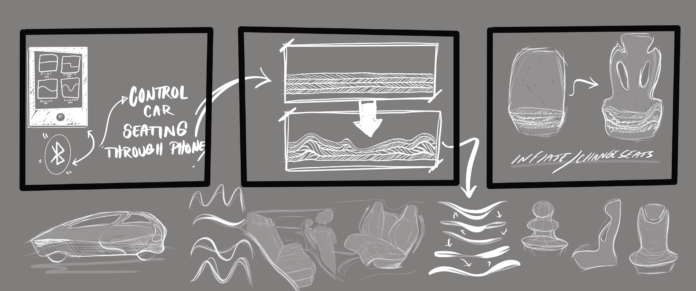After doing my research with technology and its futurist paths, I found that there were many roads to go down. From touchscreen windows and door frames like something out of a Marvel movie to dreams of holograms beaming from the center of your sleek autonomous vehicle. The ideas and possibilities are truly looking endless.
However I decided to narrow down my research into something that fit in with the rest of my other research finds from other topics. There I found a trend prediction that anticipates the future car looking more like a tight living room than the car you know today. While at first this idea seems and certainly looks incredible with stunning seat designs and open space for your legs instead of that crammed car you’re used to, the actual practicability of it doesn’t work so well.
In these cars its hard to find a place to transport things, like something as easy as your groceries. Or how about families with disabled members, where does the wheelchair fit into that space? What about when you’re doing a house project and need to transport new furniture, or panels of dry wall? This can go on and on and is maybe redundant but when I was looking at all these new technologies and the concepts that came with them, these were really the questions I kept thinking about.
So the idea I came up with here, using one of the really interesting technology studies, is a changing interior based off of your needs controlled from your own phone. The technology is being worked on in a partnership with BMW and MIT; it is an inflatable technology created through 3D printing and complex wiring system that communicates with sectors of the inflatable to control which parts inflate and which don’t. Imagining that this tech proves stable and evolves over the next fifteen years, it would be cool if most of the inside seating aspects were designed using this. Then a user can chose how the interior of their car looks to best fit their needs and desires. The person with a wheelchair can make room with the click of a button, the person with back problems can change the seating to give them the support they need, and so on.
It all comes down to the user and what they need, to give people as much access to personalization as they need and want.




